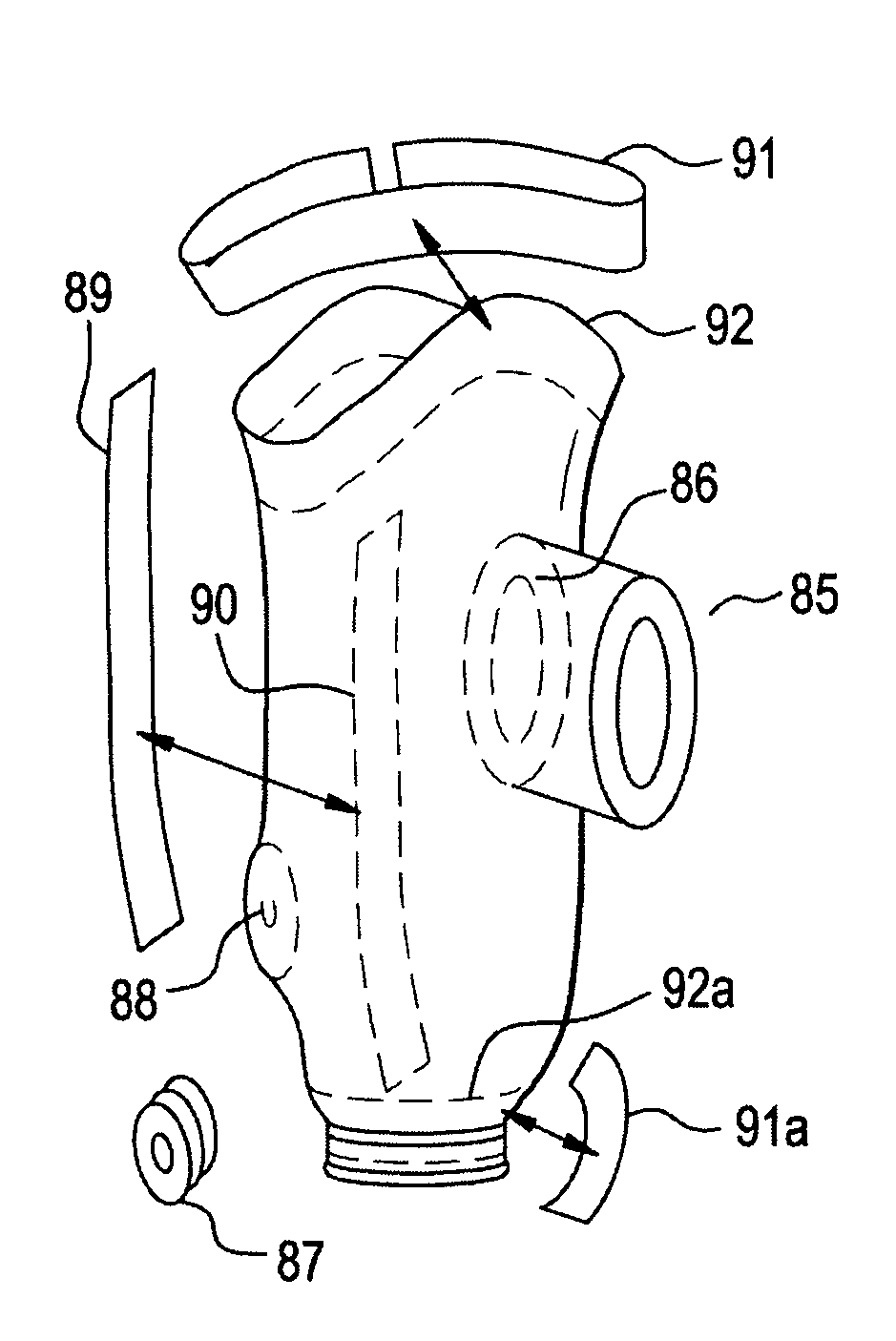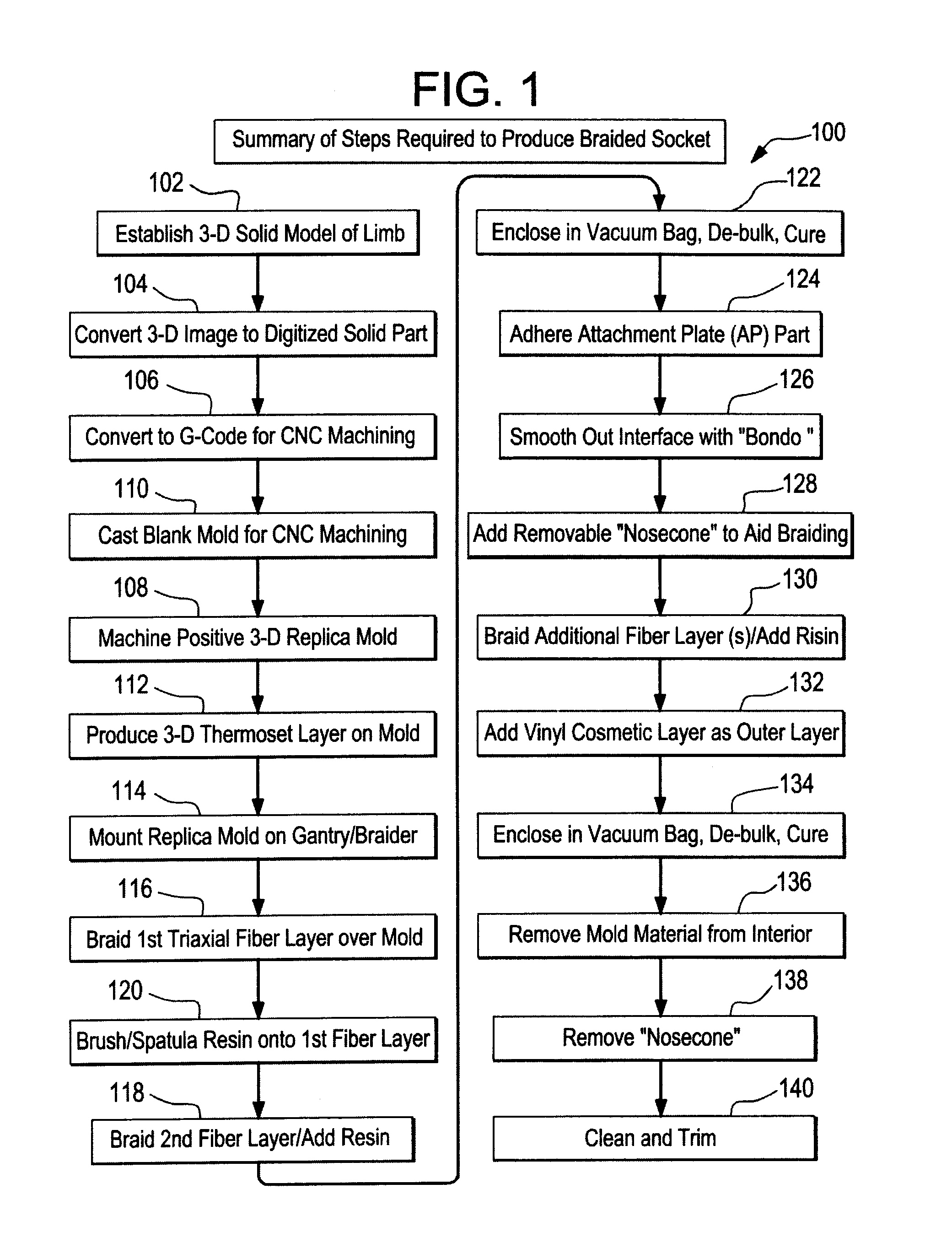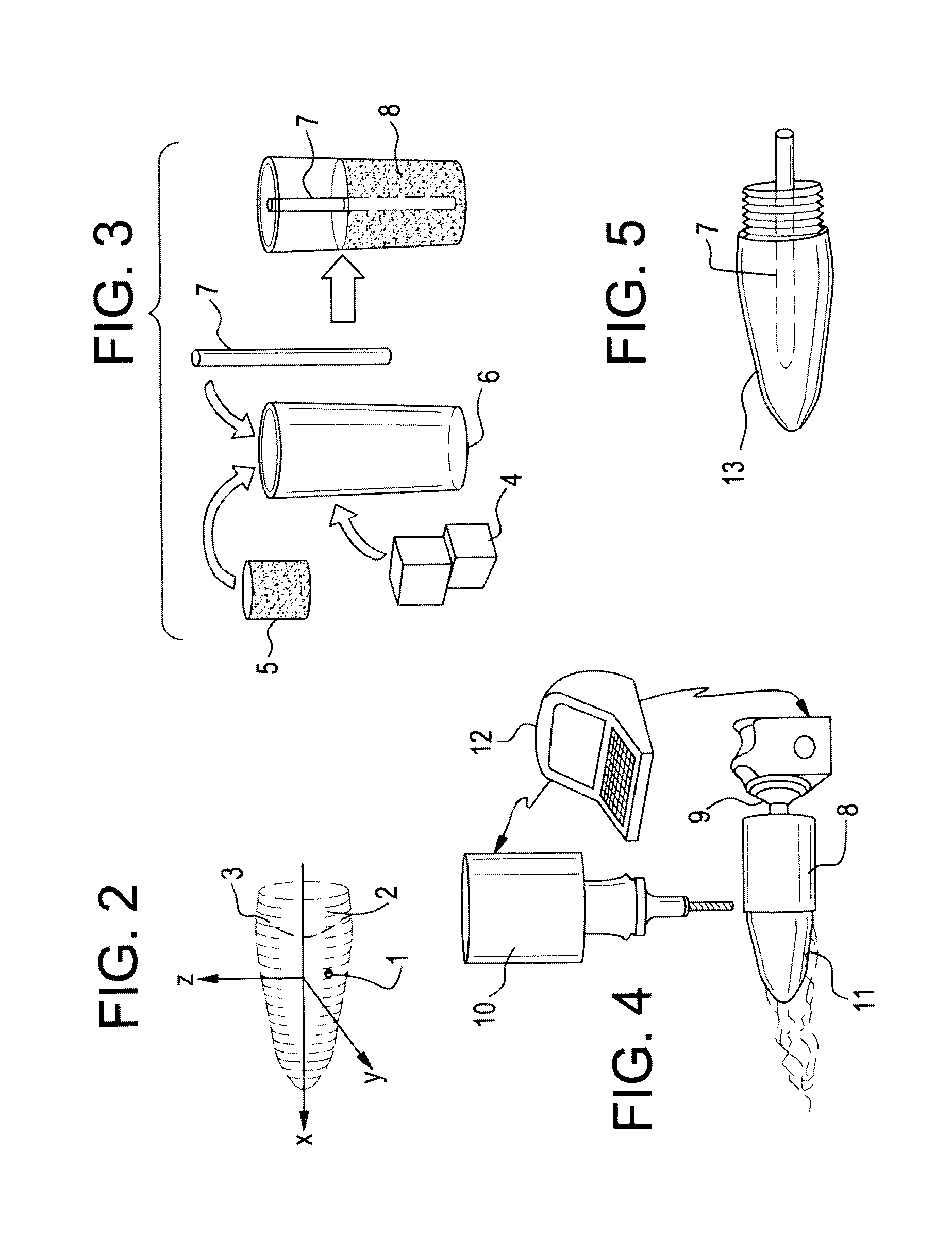Braided prosthetic sockets with attachment plates and methods of manufacture
a technology of attachment plates and prosthetic sockets, which is applied in the field of braided prosthetic sockets with attachment plates and methods of manufacture, can solve the problems of laborious, reduce the production time and cost of prosthetics relative to conventional methods, etc., and achieves the effects of convenient retrieval and use, strong and light weight, and convenient us
- Summary
- Abstract
- Description
- Claims
- Application Information
AI Technical Summary
Benefits of technology
Problems solved by technology
Method used
Image
Examples
Embodiment Construction
[0051]FIG. 1 illustrates the step-by-step process for the fabrication of the braided socket 100 with an attachment plate, beginning with the 3-D solid model 102 of the residual limb, which is converted to a digital solid part file 104, and then to G-code 106, which controls the milling machine fabrication 108 of a positive replica of the residual limb from the cast blank mold 110. A thin thermoplastic layer is produced on the mold 112 which can strengthen the mold during the braiding process and create a smooth inner surface in the final product. The replica mold is then attached to the gantry 114, which inserts the mold mandrel into the braider, where layers of fiber are laid down 116. The resin is applied manually 120 between layers 116, 118 by brush, spatula or spray, and the assembly is then vacuum bagged, de-bulked and cured 122. An attachment plate is affixed 124 to the distal end of the cured assembly. The interface between the socket and the attachment plate is smoothed 126 ...
PUM
| Property | Measurement | Unit |
|---|---|---|
| shape | aaaaa | aaaaa |
| reducing pressure | aaaaa | aaaaa |
| weight | aaaaa | aaaaa |
Abstract
Description
Claims
Application Information
 Login to View More
Login to View More - R&D
- Intellectual Property
- Life Sciences
- Materials
- Tech Scout
- Unparalleled Data Quality
- Higher Quality Content
- 60% Fewer Hallucinations
Browse by: Latest US Patents, China's latest patents, Technical Efficacy Thesaurus, Application Domain, Technology Topic, Popular Technical Reports.
© 2025 PatSnap. All rights reserved.Legal|Privacy policy|Modern Slavery Act Transparency Statement|Sitemap|About US| Contact US: help@patsnap.com



